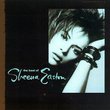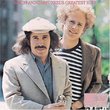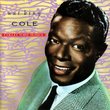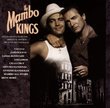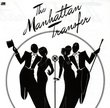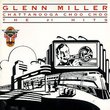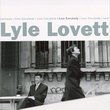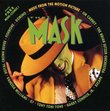| All Artists: Stan Kenton Title: Stan Kenton 1940 -1944 Members Wishing: 2 Total Copies: 0 Label: Classics Release Date: 7/7/1998 Genres: Jazz, Pop, Broadway & Vocalists Styles: Swing Jazz, Traditional Jazz & Ragtime, Orchestral Jazz, Oldies, Traditional Vocal Pop Number of Discs: 1 SwapaCD Credits: 1 UPCs: 3307517084828, 330751708482 |
Search - Stan Kenton :: Stan Kenton 1940 -1944
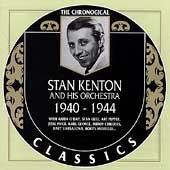 | Stan Kenton Stan Kenton 1940 -1944 Genres: Jazz, Pop, Broadway & Vocalists
|
Larger Image |
CD DetailsSimilarly Requested CDs
|
CD ReviewsStan Kenton 1940-1944 : Laying the Foundation rayer@vlnk.net | Ventura, CA | 07/29/1999 (5 out of 5 stars) "To appreciate this album for the full 5-star value, it is important to remember Kenton's role in advancing big-band music from and out of the swing era. With Etude for Saxophones and Reed Rapture, we hear Kenton taking advantage of chromatic substitutions from familiar chordal patterns and the 5 notes available from an expanded saxophone section (most bands in 1940 only used 4). These two selections helped establish the so-called "pastels" (named after Kenton's "Opus in Pastels") voicing of the saxophones that featured the two alto saxophones playing over a sustained background provided by the two tenors and the baritone sax. With Latin-influenced numbers such as Taboo, Adios, Lamento Gitano, and El Choclo, Kenton had adequate opportunity to employ his early penchant for staccato and syncopated passages. The Howard Rumsey (the famous owner of the Lighthouse in Hermosa Beach) feature Concerto for Doghouse is somewhat imitative of Slam Stewart. By November 1943, the band had expanded in size and improved in quality with the addition of Buddy Childers and Art Pepper. Lead alto Eddie Meyers is a bit more relaxed than Jack Ordean on the prior tracks. Note that Do Nothin' Till You Her From Me relies less on the staccato and portends the arrival of bop (listen to the brass behind the unison saxes befor the vocal). Eager Beaver was a millon-seller, and helped Stan financially through the years. Dorris turns in a credible solo here, and Stan states his melody concisely. Harlem Folk Dance is the first known Pepper solo, brief as it is. Dorris is his usual gruff self. The trumpet soloists are probably Karl George and John Carroll. Joe Vernon's drumming is an improvement over most of Kenton's drummers during this period, who found the new music difficult. The remaining tracks from May-December of 1944 are notable for the presence of Miss Anita O'Day. The male vocalist Gene Howard, is quite underrated, and was later forced into a role as band publicist by Capitol execs. I'm Mad For a Pad previews the more mature Kenton sound in the introduction. Note the de-emphasis on staccato passages and the brighter and brassy sound of the now 5-man trumpet section. And Her Tears Flowed Like Wine was another bonifide million-seller due in no small part for the short-term prenence of Jesse Price on drums (hired by Stan at Anita's insistence). Gotta Be Gettin' shows Day's ease at handling the chromatic nature of the melody. Sweet Dreams, Sweetheart, Gettin', and Ev'ry Time We Say Goodbye oddly include the presence of a clarinet lead in the reeds, which serve to illustrate a definite link between early Kenton and Glenn Miller (other similarities include early use of chromaticisms and a larger ensemble). The oddity here lies in Stan's later disdain for the clarinet sound. Balboa Bash in this collection is modified from the original 1941 arrangement to accomodate the band's more modern approach and larger ensemble. Boots Musselli is the alto soloist, and would play with Stan off and on until the early 50's. Unfortunately, Stan Getz is not heard from as a soloist on this collection, as he was relegated to playing 2nd tenor behind both Emmett Carls and Dave Matthews. Not until Getz played with Benny Goodman in 1945 would he emerge as the greatest jazz superstar that played with Stan during the period covered by this album. To summarize, the value of this album is that it lays a foundation to understanding the early and later music of Stan Kenton. It was a period where Stan was the primary arranger, was a frequent soloist, and led the band not as a father figure, but as a comrade of his fellow musicians."
|

 Track Listings (22) - Disc #1
Track Listings (22) - Disc #1